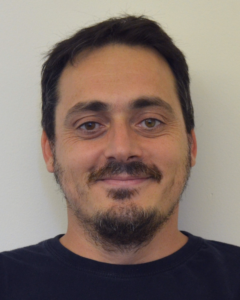 We met Oscar Camara, full professor of biomedical engineering at Universitat Pompeu Fabra, Barcelona. After studying telecommunication engineering in Barcelona, he went to Paris for a master and he started to work on medical image processing, which he loved as a way to explore the human body and better understand it. He then moved to London as a postdoc, and started to work on computational modeling in Alzheimer’s disease. “I liked it a lot, the fact of using mathematics to mimic the physics of different organs and systems. And from then on, I’ve enjoyed working closely with clinicians to better understand physiology and use advanced technologies for improving clinical decisions. During the last years, probably the most rewarding moments are related to the training of young people and the graduate masterpieces students, and helping them become researchers in our field. In my research group, we combine advanced computational techniques such as data science, in silico modeling and visual analytics in different clinical applications. And always in collaboration with clinicians and again, with the main goal to better understand the behavior of certain organs and models and to improve therapies”.
We met Oscar Camara, full professor of biomedical engineering at Universitat Pompeu Fabra, Barcelona. After studying telecommunication engineering in Barcelona, he went to Paris for a master and he started to work on medical image processing, which he loved as a way to explore the human body and better understand it. He then moved to London as a postdoc, and started to work on computational modeling in Alzheimer’s disease. “I liked it a lot, the fact of using mathematics to mimic the physics of different organs and systems. And from then on, I’ve enjoyed working closely with clinicians to better understand physiology and use advanced technologies for improving clinical decisions. During the last years, probably the most rewarding moments are related to the training of young people and the graduate masterpieces students, and helping them become researchers in our field. In my research group, we combine advanced computational techniques such as data science, in silico modeling and visual analytics in different clinical applications. And always in collaboration with clinicians and again, with the main goal to better understand the behavior of certain organs and models and to improve therapies”.
“One of the largest projects we’re currently working on is to determine – using computational models – the risk of a patient with atrial fibrillation to develop a thrombus, and to tell the clinicians which is the optimal device to implant to avoid potential problems after the intervention. Another really nice project that we’re working on is to develop biomechanical models to simulate the development of the brain in babies, from fetal life till they are born, and identify abnormal patterns”.
Modeling and Simulation is a disrupting technology that is deeply changing the healthcare sector. “It’s kind of mind blowing that we can more or less replicate the behavior of certain organs and systems with mathematical equations. In silico modeling is really the ultimate goal for understanding the mechanisms in our body in normal evolution and with pathologies, and to test different hypotheses to explain what we don’t know yet. In fact, it is intrinsically linked to the scientific method, and also it allows to perform a lot of experiments in silico, that would be very difficult to set up in the lab”.
“I think that modeling and simulation is already a game changer in the life science industry. In particular, in combination with data science, it helps a lot to interpret the big amount of data that we have these days, both in population-based and in individual-based studies. And also it is already necessary to have in silico modeling and simulation for a lot of medical devices as part of the regulatory process. I mean, you need to present rigorous in silico models with proper verification and validation steps. During the next years, we’re going to see how in silico trials will become a really much needed tool to optimize the standard way of performing clinical trials”.
Finally, what are in Camara’s opinion the main challenges that the healthcare industry is facing today? “There are quite a lot of challenges, but maybe first of all, just to properly translate the research that is performed in academic and clinical centers into products that have added value in the health care chain. But for this, something quite important is to advance on the generalization and replicability of existing computational tools that need really to perform the same way with data from different hospitals, different quality, etc. And again, in order to do this, what is important is to have multicentric studies which shared data, which is a huge issue these days due to GDPR laws, maybe using federated approaches. This will require multi-institutional collaborative efforts involving industry, academia, and clinical partners”.
See the full interview here:
